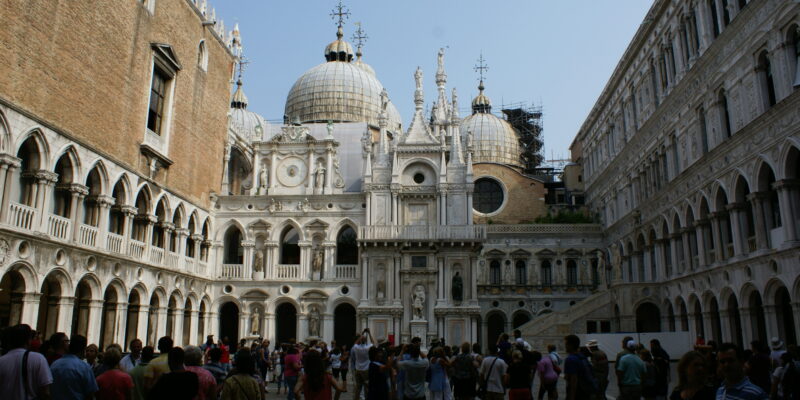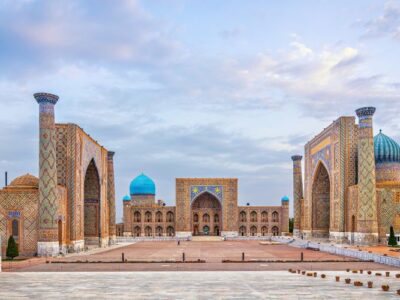
Rome’s allure lies not only in its iconic landmarks but also in the layers of history and culture that permeate its streets. Each monument and site tells a story of Rome’s evolution from an ancient empire to a modern metropolis, where the past seamlessly intertwines with the present. Whether you’re marveling at the grandeur of the Colosseum or tossing a coin into the Trevi Fountain, Rome promises an unforgettable journey through time and civilization. Visiting these landmarks offers a glimpse into the artistic genius, architectural brilliance, and cultural diversity that have shaped Rome into a global cultural capital. As you wander through its streets and squares, you’ll discover why Rome continues to captivate and inspire visitors from around the world—an eternal city where history comes alive at every turn.
1. The Colosseum
The Colosseum, an iconic symbol of ancient Rome, epitomizes the grandeur and engineering prowess of the Roman Empire. Completed in AD 80, this colossal amphitheater once hosted gladiatorial contests and public spectacles, accommodating up to 80,000 spectators. Today, it stands as a testament to Roman architectural innovation and is a UNESCO World Heritage site, attracting millions of visitors annually.
2. The Roman Forum
Adjacent to the Colosseum lies the Roman Forum, the heart of ancient Rome’s political, religious, and commercial life. This sprawling archaeological site showcases ruins of temples, basilicas, and government buildings dating back over 2,000 years. Walking through the Forum offers a glimpse into the daily life and monumental achievements of Rome’s past civilization.
3. St. Peter’s Basilica
In Vatican City, within Rome’s borders, stands St. Peter’s Basilica, one of the world’s largest and most renowned churches. Designed by Michelangelo, Bramante, and Bernini, this Renaissance masterpiece houses priceless works of art, including Michelangelo’s Pietà and Bernini’s Baldachin. Pilgrims and tourists alike flock to marvel at its grandeur and religious significance.
4. The Vatican Museums
Adjacent to St. Peter’s Basilica are the Vatican Museums, a treasure trove of art and history amassed by various popes over centuries. Highlights include the Sistine Chapel, adorned with Michelangelo’s ceiling frescoes depicting scenes from Genesis, and the Raphael Rooms, showcasing Raphael’s masterpieces. The museums’ vast collection spans from ancient sculptures to Renaissance paintings, attracting art enthusiasts worldwide.
5. Trevi Fountain
A quintessential symbol of Baroque artistry, the Trevi Fountain is the largest and most famous fountain in Rome. Designed by Nicola Salvi in the 18th century, it depicts Neptune, god of the sea, surrounded by mythical creatures. Visitors traditionally toss a coin into the fountain, ensuring their return to Rome—a ritual that underscores its enduring allure and cultural significance.
6. The Pantheon
Originally built as a temple to all Roman gods, the Pantheon is a marvel of ancient Roman engineering and architecture. Its massive dome, with an oculus open to the sky, remains the world’s largest unreinforced concrete dome. Converted into a Christian church in the 7th century, the Pantheon continues to captivate visitors with its harmonious proportions and historical significance.
7. Spanish Steps
Connecting the Piazza di Spagna with the Trinità dei Monti church, the Spanish Steps are an iconic gathering place and architectural gem in Rome. Constructed in the early 18th century, these 135 steps are adorned with azaleas in spring and provide a picturesque backdrop for visitors enjoying the vibrant atmosphere of the surrounding streets and squares.
8. Piazza Navona
One of Rome’s most elegant and lively squares, Piazza Navona is built on the site of the ancient Stadium of Domitian. Lined with Baroque palaces, fountains, and cafés, it remains a hub of cultural and social activity. The centerpiece is Bernini’s Fountain of the Four Rivers, symbolizing the four major rivers of the continents known at the time, showcasing the artistic brilliance of the Baroque period.
9. Castel Sant’Angelo
Originally commissioned by Emperor Hadrian as a mausoleum for himself and his family, Castel Sant’Angelo later served as a fortress and papal residence. Connected to St. Peter’s Basilica by a fortified corridor, it offers panoramic views of Rome from its rooftop terrace. Today, it houses a museum that chronicles its varied history and the strategic role it played in Rome’s defense.
10. St. Mark’s Basilica
While primarily associated with Venice, St. Mark’s Basilica holds a unique connection to Rome through its deep historical and cultural ties. Commissioned by Pope Mark in the 4th century AD, this basilica became one of the most significant churches in Christendom. Its distinctive Byzantine architecture, characterized by intricate mosaics and marble columns, serves as a testament to Rome’s enduring influence as a hub of religious and artistic innovation. For visitors, obtaining skip-the-line tickets to St. Mark’s Basilica ensures timely access to admire its awe-inspiring beauty and historical significance without the hassle of long queues.











